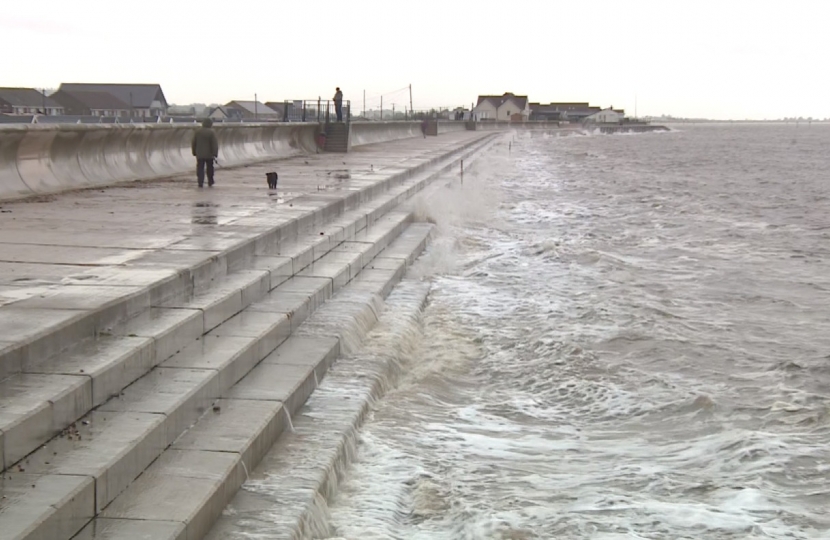
A record £5.2 billion will be invested over the next six years to better protect thousands more homes and businesses from flooding and coastal erosion including in North West Norfolk.
The Flood and Coastal Erosion Investment Plan sets out how new flood and coastal schemes will improve protection for 336,000 properties by 2027, helping to avoid £32 billion in wider economic damages and reducing the national flood risk by up to 11 per cent. This follows the Environment Agency’s successful delivery of the government’s previous £2.6 billion investment between 2015 and 2021, protecting more than 314,000 homes.
More than £860 million will be spent in 2021-22 boosting design and construction of more than 1,000 schemes across England as part of the Environment Agency’s annual capital programme. This year will see an extra £250 million spent on flood and coastal defences in 2021/22 compared with last year - the highest ever annual investment. This includes several projects in North West Norfolk outlined below:

An interactive map detailing the location of the schemes has been published by the Environment Agency.
The full package of actions on flooding and coastal erosion is available on gov.uk.
The funding will be accompanied by a consultation in the autumn, where the Government will look at how to protect frequently flooded communities. It will consider how to strengthen the assessment of local circumstances, such as where areas have flooded on multiple occasions, when allocating funding during the six-year plan.
The Government will bring in tighter guidance for planning authorities as part of a package of actions to protect communities from flooding. Householders will benefit from changes to the Flood Re Scheme that will allow insurers to pay an additional amount for the installation of property flood resilience measures after a flood - like air brick covers, flood doors and flood resistant plasterboard. Measures to tackle the risks from surface water flooding are also included in the plans.
Planning reforms
On planning, a recent review of decisions by Defra, the Ministry of Housing, Communities and Local Government (MHCLG) and the Environment Agency found over 97 per cent of planning decisions for residential properties were made in line with Environment Agency (EA) advice in the year 2019/20. However, 866 homes were granted planning permission contrary to EA advice.
New guidance for local planning authorities, designed to drive up compliance with planning rules, will reaffirm that they must refer planning decisions to Ministers when the Environment Agency is sustaining an objection on flood risk. Under the plans, the Government will also consider how planning decisions in areas at risk from surface water flooding could be subject to the equivalent rules in future.
Insurance
A raft of improvements to Flood Re, the UK-wide scheme which helps homes at risk of flood secure insurance cover. This will allow insurers to help flooded households to make their homes more resilient to future flooding using products such as air brick covers, flood doors and flood resistant plasterboard - and benefit from discounted insurance premiums if they have these installed.
The Government has committed to publish a Property Flood Resilience Roadmap by the end of next year which will further accelerate take-up of property flood resilience measures by identifying action needed from industry and government. The changes follow a government consultation and an Independent Review of Flood Insurance, led by Amanda Blanc, the response to which the Government has also published today.
Other action taken includes the Environment Agency working with local authorities to provide better surface water flood risk mapping by summer 2022, which will offer crucial information to an additional 3.3 million people and 1.4 million properties at most risk.
The report offers an update on progress from the Surface Water Management Action Plan and the independent review of surface water responsibilities led by David Jenkins. Together these move us forward in tackling the most widespread form of flooding in England, including strengthening local flood plans and encouraging greater joint working between councils, water companies and other bodies.

